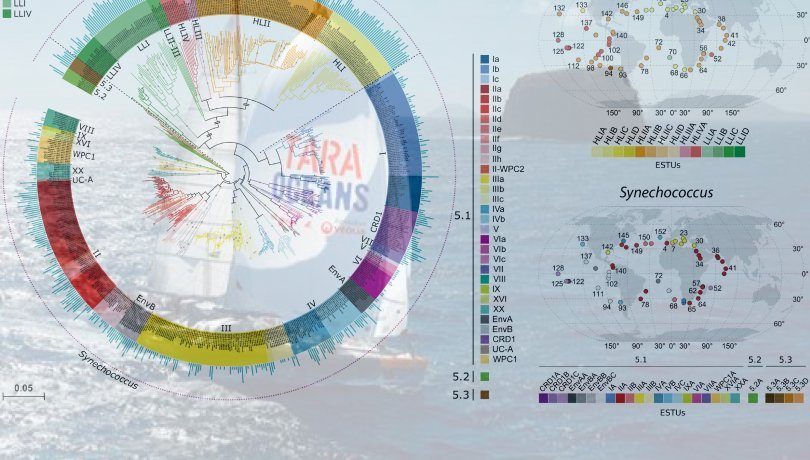Researchers of the ICM participate in an international study that maps the distribution patterns of the two most abundant genera of marine phytoplankton: Prochlorococcus and Synechococcus. These organisms play a key role in the carbon cycle by absorbing atmospheric carbon dioxide, and are the responsible of about 25% of the primary production of organic matter in the oceans. The work, published in the journal Proceedings of the National Academy of Sciences (PNAS), defines new phytoplankton populations in certain areas of the oceans.

Researchers of the ICM participate in an international study that maps the distribution patterns of the two most abundant genera of marine phytoplankton: Prochlorococcus and Synechococcus. These organisms play a key role in the carbon cycle by absorbing atmospheric carbon dioxide, and are the responsible of about 25% of the primary production of organic matter in the oceans. The work, published in the journal Proceedings of the National Academy of Sciences (PNAS), defines new phytoplankton populations in certain areas of the oceans.
The results have been obtained from samples collected on board the Tara Oceans expedition. The researchers have used an innovative technique based on the capture of environmental DNA fragments obtained by what is called metagenomics. This consists in a method that allows the analysis of genomes of organisms –in this case, microorganisms- living in an environment as a whole community, without having to culture them in the laboratory. With this methodology, scientists have obtained a new vision of cyanobacteria biodiversity and distribution in the global ocean.
"The reconstruction of genes from environmental metagenomes opens a door to discover new biodiversity that was almost impossible to find out few years ago", explains Francisco M. Cornejo, one of the authors of the paper, of the Department of Marine Biology and Oceanography of the ICM. This new approach to biodiversity made possible to define new phytoplankton populations inhabiting specific oceanic regions and to discover a cyanobacterial microdiversity previously hidden to us. "What we regarded as a single population, after this work we know it is a group of different populations of cyanobacteria", adds the researcher.
The analyses are based on the use of the high-resolution genetic marker petB, shared by the species of phytoplankton, rather than ribosomal 16S rRNA gene, an universal marker used to describe bacterial diversity.
Reference databases
Silvia G. Acinas, also researcher at the ICM, and coordinator of the prokaryotes consortium of Tara Oceans, highlights that "metagenomics has become an indispensable tool for any biodiversity study, in particular of complex communities such as populations of marine cyanobacteria". Studies of molecular ecology often face the absence of reference databases to study and define the biodiversity, and therefore, as Acinas says, "global oceanographic cruises like Tara Oceans or the Malaspina expedition are crucial to discover the biodiversity of marine prokaryotes and, overall, to find its ecological sense".
The work also tries to discern the causes or environmental factors that make the distribution of these cyanobacterial populations heterogeneous in the planet's oceans. Scientists suggest that their presence may be conditioned by a combination of factors such as nutrient availability, elements such as iron, the amount of light that penetrates the water column, or ocean temperature.
Other participants in this research are the Centre National de la Recherche Scientifique the (France), the Macquarie University (Australia), the University of Warwick (UK), the Commissariat à l'Energie Atomique et aux Energies Alternatives (France), and the Stazione Zoologica Anton Dohrn (Italy).
Research paper
G. K. Farrant, H. Doré, F. M. Cornejo-Castillo, F. Partensky, M. Ratin, M. Ostrowski, F. D. Pitt, P. Wincker, D. J. Scanlan, D. Iudicone, Silvia G. Acinas y L. Garczarek. Delineating ecologically significant taxonomic units from global patterns of marine picocyanobacteria. Proceedings of the National Academy of Sciences. DOI: 10.1073/pnas.1524865113